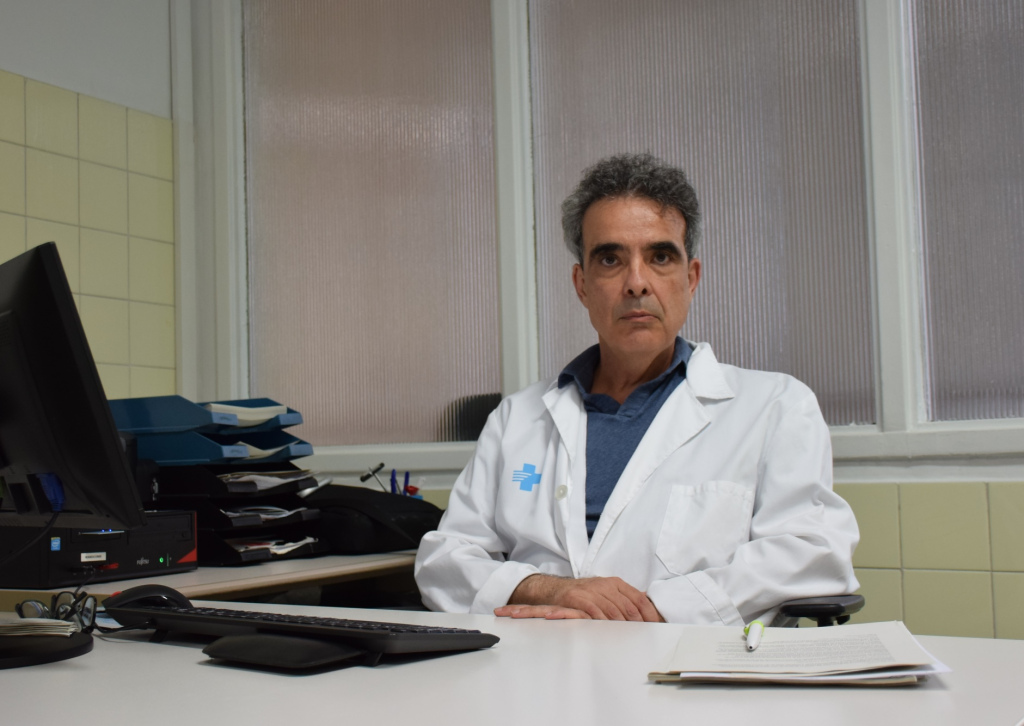Carl Llor, HAPPY PATIENT‘s Coordinator explains the project’s goals, its methods and the importance of Antimicrobial resistance (AMR) in the following interview.
Why is antimicrobial resistance so crucial?
This is a crucial topic because when Antibiotics were discovered, everybody thought this was the solution for many bacterial infections. But very soon, physicians discovered that some antibiotics were losing efficacy because the germs become resistant to these antibiotics. We now know that the more antibiotics we are using, the more antimicrobial resistance we are developing. This is why a rational use of antibiotics has become the cornerstone of the fight against Antimicrobial Resistance (AMR). Therefore this project is searching for this rational use of antibiotics by decreasing the inappropriateness of their use and dispensing by 40%.
What is the HAPPY PATIENT project about?
The HAPPY PATIENT project is a quality improvement and research project that seeks a more rational use of antibiotics through a patient-centered approach. And the reason why it is a patient-centered study is that we want to improve antibiotic consumption and dispense by targeting our interventions to those healthcare professionals a patient can find when seeking healthcare assistance. Those are the Primary Care physicians and nurses, the GPs, the one’s working at Out of Hour services when the practices are closed (weekends, at night…), the nursing homes and their facilities, as well as the community pharmacists. We know that some patients go to pharmacists to get quick assistance. This HAPPY PATIENT project seeks a more rational use of antibiotics by using these antibiotics more appropriately.
How are you planning to achieve the HAPPY PATIENT’s goals?
We plan to achieve a 40% reduction of unnecessary antibiotic prescription/dispensing by means of a multifaceted intervention in healthcare professionals. Those healthcare professionals that are the main contact point of patients when looking for assistance are the key to reduce this inappropriate consumption.
Changing prescription or dispensing behavior is crucial to curb the AMR problem, but is also very challenging.
We are using a methodology where the professionals first complete a chart with their usual prescription or dispensing behavior, then receive a multifaceted intervention including the feedback of their first registry, and then complete again the chart so that improvement can be measured.
This multifaceted intervention is seeking this change of behavior, not only by discussing the results of the first registration but also by giving the chance to attend courses and workshops to improve communication with patients. We know many doctors are reluctant to change their minds when they think patients want antibiotics. If we can also train the GPs so they can improve these communication skills and listen if patients want antibiotics or not, we’ll be able to change the minds of the antibiotics prescribers. We will also do that by presenting updates, guidelines, and leaflets for both patients and the scientific communities, and we will distribute these materials through the waiting rooms of Primary Care centers, nursing homes, pharmacies, etc… We’ll be able to obtain improved antibiotic prescribing. This intervention has different parts, and it is not only the discussion and presentation of the results but also workshops and specific training. If we do that, the second registration will be better in terms of the number of antibiotics prescribed and the quality of these antibiotics. If we can achieve an improvement of these quality indicators, we would have done a great job.
With how many levels of care are you planning to work with?
Between 80 and 90% of the antibiotics are issued in Primary Care. We also know that the quality of antibiotic prescriptions can be improved in other areas. For example, there is also a vast antibiotic prescription in out-of-hours services and nursing homes. In some countries, pharmacists can give antibiotics even without a prescription. They can play a significant role in convincing and teaching patients how to use and take antibiotics. We want to improve antibiotic use in these four types of settings. Therefore, we want to target our intervention to GPs and nurses, to doctors working in out-of-hours services, to nurses and doctors working in nursing homes, and pharmacists and the pharmacy technicians.
We will do it in 3 countries with a high antibiotic prescription, such as Spain, France, Greece, other countries with a medium prescription level, such as Poland and, finally, we will be working with a country with an excellent antibiotic consumption level; Lithuania. With the results of these five countries, we’ll be able to upscale the results to the rest of the European countries.
How can differences in prescription between countries be explained?
That’s an essential question because different from what we see in other pharmacological groups (drugs aiming to lower high blood pressure, antidepressants, or those at treating cholesterol levels), the use of antibiotics is very variable among European countries. We have countries with a very low antibiotic prescription; for instance, nowadays, Sweden and the Netherlands are the countries with the lowest level across Europe. On the other side of the scope, we have Turkey, Greece, or Spain.
So, we see these variabilities between countries, but we also see many differences within these countries, even among healthcare professionals working in the same practice, consultation, or healthcare center. While all of the GPs see the same sort of infections, they act in different ways. That is why we are so sure about the success of our interventions.
What have been the partner’s selection criteria?
Partners’ selection is key in the success of every project, small or big. We’ve been doing research and studying the AMR problem for a long time, collaborating with different professionals and researchers across Europe. All partners of HAPPY PATIENT project come from previous collaboration in AMR related projects and all of them play a key part in the success of the project. We have experts in developing the APO methodology, in detecting the needs of the professionals and patients related to antibiotic use, in analyzing the data, in developing all the parts of our multifaceted intervention, in communication,… We also count on experts in each of the countries and settings were the project will take place, as well as professional and patient associations that widen our view and help us to disseminate our work.
We have selected experts in each of the levels where healthcare professionals are invited to take part, in each of the countries where the project will take place by using the APO methodology.
Is HAPPY PATIENT also willing to teach the science behind antibiotics?
As said before, this is a quality improvement project. Knowing how to manage community-acquired infections, antibiotic prescription, reasons for AMR, communication with patients,… all this knowledge is the cornerstone for professionals to change their practice behavior.
We will prepare courses to be delivered during the intervention, facing all these points. Furthermore, these courses will be tailored for the different professional groups, as Primary healthcare professionals don’t have the same needs as out-of-hours services, nursing homes, or pharmacies.
Once the courses are delivered, we will share them with the scientific community so that they can be used by all professionals, not only those taking part in HAPPY PATIENT.
What is the so-called APO Methodology?
The APO Method is a nice and simple methodology that has been proven that can improve drugs prescription. We have a wide experience with this method, especially in antibiotic prescribing, and the APO Method has been already used for over 20 years. We consider that by using this method we’ll be able to improve the prescription of antibiotics among the target countries.
The APO method is very simple: Health Care professionals complete the 1st registry, then gather together to discuss their results and finally complete a second registry of their practice.
Also, the chart used has very simple features:
It consists of different columns and different kinds of variables that doctors, healthcare professionals, and technicians have to tick off after a visit with a patient. It takes less than one minute to register efficiently. That is why HAPPY PATIENT is so feasible. We know many healthcare workers are very busy, so the use of the APO Method will help us on that matter. We consider this method to be the best.
The COVID-19 pandemic is providing us with an opportunity?
Absolutely. People have learned the difference between a virus and a bacteria and societies have become more aware of the importance of preventing the spread of infections by using masks. Also, the population is more aware of hand hygiene or social distancing. At this point, some of these strategies are already very well known by patients. This pandemic has taught many people how to avoid the spread of microorganisms and how to reduce the spread of contagions. COVID-19 has provided lots of tools and experience which will prove very useful when future pandemics arrive.
As a healthcare professional, how can I participate in the project?
There is a coordinator in each of the countries where the project is taking place. If you are a health care professional and you wish to collaborate with HAPPY PATIENT, your national coordinator will be very glad to count on you. Contact us at [email protected].

The content of this interview represents the views of the author only and is his/her sole responsibility; it cannot be considered to reflect the views of the
European Commission and/or the Consumers, Health, Agriculture and Food Executive Agency (CHAFEA) or any other body of the European Union. The
European Commission and the Agency do not accept any responsibility for use that may be made of the information it contains

